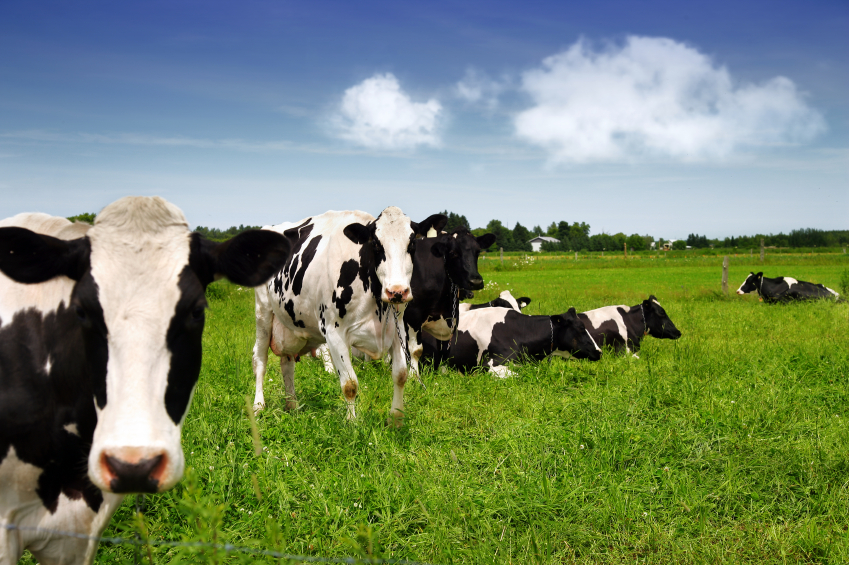Scientists study the anti-methanogenic potential of medicinal plant extracts
07/03/2019 / By Ralph Flores

People have long used medicinal plants to treat various diseases. Researchers from the University of Pretoria in South Africa, however, found an interesting application for these benefits. In their article, which appeared in the journal Animal Production Science, the team suggested using these plants to reduce methane production, as well as subsequent emission, from cows.
That’s to say: Medicinal plants are great for reducing the methane in cow farts.
Medicinal plants improve digestibility of organic matter
In the study, the researchers evaluated leaf extracts from the following plants:
- Betel (Piper betle)
- Aloe vera (Aloe vera)
- Papaya (Carica papaya)
- Neem (Azadirachta indica)
- Moringa (Moringa oleifera, both leaf extract and seed pods)
- Mexican sunflower (Tithonia diversifolia)
- Purging nut tree (Jatropha curcas)
Aside from their ability to reduce methane production (anti-methanogenic), the researchers also looked at whether the plants can be added into feed without affecting its other qualities, such as digestibility and gas production. In feed, digestibility refers to the percentage of food that the cow digests and uses for energy. This means that grass with a digestibility of 50 percent means that only half of the feed will be of use to the cow, and the rest will be excreted as feces.
This is also the time where methane comes into the picture. Cows have a different digestive system than humans, where food passes through other “compartments” first before it is fully digested in the true stomach (abomasum). In particular, the rumen, the first area where food passes through, contains microbes that feed on the forage, breaking it down and fermenting it — a process known as rumination. The result is the production of volatile fatty acids, the animal’s primary energy source, and ammonia, which it uses to produce microbial protein. The process also produces gases like methane and carbon dioxide, which are expelled through belching.

For the current study, the researchers added the plant extract to feed made from weeping lovegrass (Eragrostis curvula) and ash. The mixture was then added to a preparation containing rumen fluid and carbon dioxide, then incubated. The experiment was repeated five times.
Based on the results, extracts from neem, papaya, purging nut tree, moringa, and Mexican sunflower significantly reduced methane levels. The researchers believed that this was because of the presence of flavonoids, phenols, and alkaloids in the extracts. They also found that these plants improved the digestibility of the feed, which also meant an increase in the number of volatile fatty acids produced after rumination. Papaya extracts, they noted, contained papain, which helped in the breaking down and digesting of hay.
While more studies might be needed to explore the mechanism behind the anti-methanogenic properties of these plants, the researchers are positive that their work is the first step in understanding how medicinal plants can also be used in animal husbandry. (Related: Greenhouse gases are natural – mussels and oysters produce high levels every year.)
Modern agriculture, not cow farts, causes the increase in methane production
The study published by the South African team could very well be great news, but for different reasons. For one, the study proves that some medicinal plants have applications beyond human health, making them viable resources for natural feeding and management strategies for the dairy industry, as well as alternatives to antibiotic-filled additives that are currently being used in commercial lot feeding.
It’s also worth pointing out that the current dilemma with methane emissions is a man-made problem. It’s not just cattle that have a polygastric digestive system — buffalo, goats, sheep, camels, and wildebeest are just some animals that have been producing methane for millions of years. Despite their sheer number, it was never a problem as the methane that they expelled was used as food by methanotrophs — microorganisms that use methane as an energy source — and neutralized.
Modern agricultural practices, however, disrupted this balance. With the introduction of chemical fertilizers and herbicides, these methane-loving microbes are destroyed. In addition, lot feeding, which forces cattle to eat grains, is damaging to both the animals and the environment. It not only harms their internal organs, but it also damages the grasslands. Producing corn, soy, and grains to feed cattle can destroy soil organic matter, which is needed for better crop yield. Adding synthetic fertilizer to the soil to boost plant growth — and you have a problem that goes way beyond cow farts.
Sources include:
Submit a correction >>
Tagged Under:
This article may contain statements that reflect the opinion of the author





















